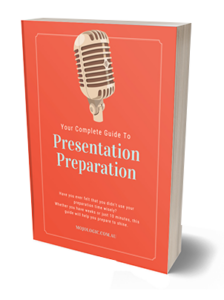Parliament is in session and I am both appalled and intrigued by the infantile behaviour of our elected representatives.
Consider the challenge a speaker faces when trying to land a point whilst relentlessly assailed by verbal sucker punches from the cross benches. The speaker is hit with snide laughs, table banging, random remarks and overblown expressions of indignation. These attacks are intended to interrupt, to throw the speaker off course, to grab attention.
Ultimately, the heckler is attempting to steal power from the speaker.
In the context of question time we expect such behaviour. The cross benches are always a tough crowd. It is the norm, the culture of the discourse. The seasoned politician plays the game. They give as good as they get, they thicken their skin and throw themselves into battle.
This game has very little to do with governing.
Our experience in the world of business is more subtle. The intent of the heckler, however; is the same.
In any communication forum, be it a meeting, presentation, or sales call; there is a chance you will be met with a tough crowd. A hostile environment may take you by surprise, but there are some techniques you might employ to help you regain power and poise.
1. Set up, Set up, Set up
If you sense you have entered a tough room you will need to slow down and make sure you set the scene for the discussion to follow. Take the time to make sure you clearly lay out the background, purpose of the session and the role that everyone (including the audience) has to play. What you say in this crucial opening act is as important as how you say it. Your tone and pace will set the energy in the room.
The set up is arguably the most important component of any presentation. This is amplified in difficult conditions.
2. Pause
The humble pause. The most underrated technique in the speaker’s toolkit. When you are interrupted or thrown off course, simply pause.
Let there be some silence in the room following a potentially disruptive remark. People don’t like silence. If you wait 2 to 3 seconds it is very likely that silence will be filled. Let it be somebody else, rather than you that speaks first. In some cases a group will censor its own members. There may be some civilized ‘outliers’ among the tough crowd.
The added bonus of the pause is that it buys you some time to think about what you might say next.
3. Change your tone
If you change your tone you can change the energy in the room. What was your original tone, before the interruption?
If you were calm and considered then speed up. Amp up the energy in the room. Take a step forward, increase your volume and demonstrate that you are enthusiastic. Maybe they were bored.
If your original tone was fast paced and energetic then slow down. Release some of the energy in the room. Take the pressure off you and your audience. Try physically taking a step back. Demonstrate that you are reflecting before you speak again. Maybe they were threatened.
4. Don’t engage
Don’t take the bait. If you are goaded you must not rise to the challenge. That will give other party power and the dialogue will descend into an unpleasant ping pong match.
You will rarely encounter such open hostility in a business context, but it happens. Keep your cool. Rise above it.
5. Try humour
This technique is not for everybody and there are cultural sensitivities to consider but sometimes the careful application of a joke can diffuse the situation.
Make sure your retort is not a retaliation. Take aim at the problem, never the person. You might try a self-deprecating form of humour to gain support from the crowd.
In order to persuade your audience you must demonstrate confidence in yourself and your message. Don’t let a tough crowd get in your way.
At mojologic we can help you with building a persuasive presentation, that is well planned, well supported and well delivered. Get in touch today.


